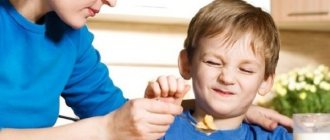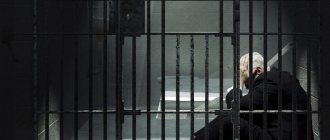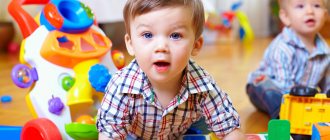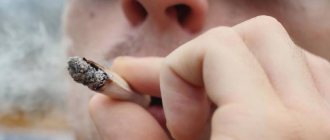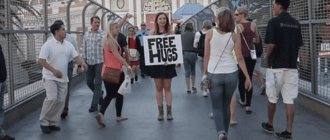If a child writes poorly - rearranges or skips letters, makes “stupid” mistakes in well-known words - primary school teachers usually advise “study more”, they say, over time quantity will turn into quality. But neuropsychologists believe that simple rewriting does little to develop the frontal lobes of the brain - this is precisely why writing suffers. And they offer their own tasks that will help you write correctly and accurately.
How are the brain and hand connected?
A third of the area of the motor cortex of the brain belongs to the projection of the hand, which, in turn, is located next to the speech zone. It is these two facts: the size of the projection of the hand and its close proximity to the speech zone that gave scientists reason to believe that the development of the hand leads to the formation and development of speech skills. But how will this fact help you write correctly?
To remember a vocabulary word, we pronounce it syllable by syllable and at the same time beat out the rhythm with the fingers of our right hand on the palm of our left hand. Thanks to the beatable rhythm, there is a feeling that the voice is sounding in the head, and perception, understanding, and memorization are enhanced.
Try pronouncing the word “ice cream” syllable by syllable:
ICE CREAM
Now speak, beating the rhythm. Do you feel the difference? Children are happy to use this technique to memorize and check the spelling of words.
This kind of inconsistency often occurs: the brain works faster than the hand, which leads to mistakes, unwritten words or rearrangements of letters and syllables. For this reason, the handwriting becomes illegible or, conversely, the writing is very slow, although accurate.
It's all about weak interhemispheric connections, low levels of self-control and arbitrariness of movements due to delayed development of the frontal lobes of the cerebral cortex. This feature can be corrected at home. To do this, you can perform the following tasks daily.
Warm-up exercises
Small warm-up exercises are successfully integrated into the child’s regular activities. There is a whole group of balance exercises that involve you in play and also stimulate the cerebellum.
Lay a string on the floor and ask the children to walk from one end to the other, stepping only on the string.
Have your child jump or stand on one leg. Alternate between your left and right legs and reinforce the concept of “left-right” at the same time.
Invite your child to stand on one leg, without swaying, with his eyes closed, listening to a variety of music, gradually increasing the duration of the exercise from lesson to lesson.
On the playground, ask the children to walk along logs and narrow paths, be sure to help them.
Exercises to develop interhemispheric interaction
- We write our name with one hand, and the word “well done” with the other.
- We draw a man with one hand - from circles, with the other - from rectangles.
- We color the picture with both hands. Moreover, we color the right part of the picture with the left hand, and the left part of the picture with the right.
- We trace the outline of the picture with both hands at once.
Essence and basic principles
Neuropsychology is a science that studies mental processes occurring in the brain. With its help, it is possible to determine the perception of the surrounding world, attention, spatial orientation, speech, memory, emotional response, and motor skills.
All these processes are the basis by which you can accurately determine how successfully the baby is developing and his learning ability. If there are even slight deviations, then the child’s learning will be difficult, a dislike for classes will appear, and it may even develop a serious psychosomatic illness.
A neuropsychological set of exercises is aimed at correcting mental disorders in children from 3 to 12 years old.
In their work, psychologists use certain principles for correcting the child’s neuropsychological state. Initially, you need to understand that the methodology, and there are two types: motor and cognitive, do not act as training. They help form the basic functions and processes necessary for proper further development.
The correction begins with an impact on background elements, and then the program is built individually for each child according to his degree of development of processes in the brain.
Functions are formed in several directions: from bottom to top, from left to right and from inside to outside. Initially, the specialist uses a basic set of exercises, gradually complicating it, while outside assistance in performing the complex decreases. As a result, the baby begins to work independently without the help of an adult.
The program is designed to ensure that all classes take place only in a playful way, which is very comfortable for the child. This is the only way to remove stress, increase the child’s motivation and maximize the efficiency of the brain without harm to health.
Exercises to develop the frontal lobes of the cerebral cortex
- Please. We show various gestures, and the child must repeat them when he hears the magic word “please.” Gradually increase the pace of your gestures.
- It's the other way around. Let's clap our hands. When you clap 1 time, the child should clap 2 times. And vice versa: when you clap 2 times, he claps 1 time. Options: tapping your hand on the table or wooden spoons, stomping your foot, etc. Exercise improves the dynamics of mental processes, teaches you to quickly switch from one task to another.
- Arms, legs, head. We name the parts of the body, and the child must show them. But you need to be very careful, since you should show the part of the body that was named earlier. For example, you say “hands”, the child does not show anything. Then you say “head”, he shows his hands. You call “legs”, he touches the head.
- Rings. We connect the thumb of the left hand with the other fingers into rings one by one, starting with the index finger. We connect the thumb of the right hand with other fingers, starting with the little finger. Do it with both hands at the same time. We train concentration and switching of attention, as well as control and order of performing a series of movements.
- Games of our childhood. Games familiar to everyone from childhood will also help: “Edible - inedible”, “Sparrows - crows”, “Don’t say yes and no, don’t take black and white.”
- Gulliver and the Lilliputians. We invite the child to rewrite the words, starting with the largest or smallest letter, and then in descending or ascending order.
From the smallest letter to the largest.
From the largest letter to the smallest.
MAGAZINE Preschooler.RF
A basic set of neuropsychological exercises for children of senior preschool and primary school age.Winner of the all-Russian competition “The most popular article of the month” NOVEMBER 2017
Conditions of the competition:
GBOU School No. 1935 DO No. 1 pedagogical psychologist, neuropsychologist Galina Valentinovna Kurochkina
Motor correction is a method that allows you to catch up once lost in motor development, break incorrectly formed motor stereotypes, and form missing neural connections.
This method also makes it possible to influence those functions that are in one way or another connected with movement and, in conditions of its insufficiency, did not have the opportunity to form correctly.
Basic block of exercises.
1. Oculomotor exercises (1st year of life in ontogenesis)
The child lies on his back. At a distance of 30–50 centimeters above it there is a bright object (toy). It moves up - down, right - left, to the nose, diagonally, in a horizontal figure eight.
The task is to follow the moving object with your eyes without turning your head. It is important that the head does not turn, the pupil reaches the edge of the eye without losing the object. The movements are smooth, tracing the movement of the object to the end. If there is an area where an item is lost, this area takes longer to work through. First, the object is moved by the adult, then this function is delegated to the child.
If the child wears glasses, the exercise is performed without them.
The exercise time is about 1 minute.
This exercise works on visual attention and tracking.
The exercise is quite energy intensive.
Use with caution when ready for EPI.
2. “Language to sound” - inclusion of auditory attention.
I.P. lying on your back.
Instructions: “You close your eyes and hear this sound... When you hear it, you will need to point in this direction with the tip of your tongue (finger, hand, explain where the sound is coming from)”
A more complex version using two noise sounds.
After the task, the child should receive feedback - an assessment of his actions.
Running time is approximately 1 minute.
3. Diaphragmatic breathing (belly breathing) enhances gas exchange, intense massage of internal organs occurs.
I.P. lying on your back. First, the child needs to be taught to inhale with his stomach (inflate like a balloon, deflate). For clarity, you can put a toy on your stomach.
Inhale through the nose, exhale through the mouth.
Later, breathing is practiced on a count, for example, inhale for 3, exhale for 5, etc.
The ability to regulate breathing makes it possible to self-regulate in more complex actions.
Contraindication – EPI status.
4. Raising arms and legs for a count
I.P. lying on your back. At the same time, the arm and leg (of the same and/or opposite names) are raised to count.
Instructions: “I will count to 5, and you slowly and smoothly raise your arm and leg. On the count of “5,” the arm and leg should “look” at the ceiling.”
It is important that the movements are synchronous, uniform, movements must be performed without swaying, smoothly, without fixing points.
Any score within 10.
5. Relaxation - first invite the child to bring the tension to the maximum, and then relax as much as possible.
6. “Rocking on your back” (in ontogenesis – learning to hold your head up)
I.P. sitting in a group, chin lowered to the chest, legs pressed to the stomach, rolls on the “round” back. When performing the exercise, the head should not touch the floor (first, an adult’s hand is placed under the head), the chin should be pressed to the chest (during training, you can hold a toy with it).
The exercise is performed 5 – 10 times.
7. “Rocking on the stomach” - alignment of the vertical
I.P. lying on your stomach. Hands grab the ankle.
The main task is to maintain balance when swinging back and forth.
The exercise is performed 5 – 10 times.
8. “Log” - building a horizontal line
I.P. lying on your back.
The child’s task is to roll from one toy to another, placed in a straight line, holding the line. At first this line may be a ribbon.
The arms can be extended upward or pressed towards the body. During the exercise, it is necessary to achieve smooth movements.
9. “Crawling on your stomach” – the initial stage of crawling.
I.P. – lying on your stomach, bent arms and legs pressed to the floor.
It is important to achieve coordinated work of arms and legs.
10. "Crawling on your back"
I.P. lying on your back, arms bent at the elbows, holding the shoulders, legs bent at the knees.
Without touching your head to the floor and making circular movements with your arms, “swim on your back .
The exercise is energy-filling.
The work of the shoulder girdle and hand-foot coordination are important.
11. “Big caterpillar” – sitting stage.
I.P. Sitting, hands rest on the floor behind the body.
Folding your knees, move forward (backward) with maximum amplitude and coordinated work of your arms and legs.
12. "Little Caterpillar".
I.P. Sitting on the floor, legs together, straight, hands on your knees.
The knees do not bend, “crawling on the buttocks .
13. "Spider"
I.P. stand on bent arms and legs with your stomach up.
First, training is carried out to move forward - backward, then move one-sided - ambidextrous arm - leg (each method of movement is practiced separately).
14. "Crab"
I.P. as in the previous exercise, but the movement is performed sideways. Steps are practiced with the same and opposite limbs.
It is necessary to ensure that the arms and legs do not overtake each other.
15. “Cat” , “cat on the elbows” (basic) – coordination of 4 points.
I.P. When kneeling and on your forearms or elbows, your gaze is directed forward. First, movement while maintaining balance is practiced, then unilateral, versatile. Make sure that your palms and toes are on the floor.
16. “Bridge” - the vector changes to a lateral one.
I.P. rest on your palms and knees with your stomach down, move sideways with an extended step, along a given trajectory.
17. "Leva"
I.P. stand on palms and knees.
When moving your arms, take cross steps at the level of your elbows, your legs go straight, your head is raised up.
18. “Socks - palms” - breeding synkenesis.
I.P. sitting on the floor, legs straight, back resting on the wall, arms bent at the elbows, palms open at shoulder level perpendicular to the floor.
The movements of the hand and toe are the same and opposite.
19. "Climber"
Standing on his feet, the child must walk along the wall as if it were a rock. The palms are pressed against the wall; when moving, you can “tear off” only one limb.
20. "March"
Steps of the same and different names. For each step, the hand touches the opposite shoulder.
These exercises are the main (basic) ones in the motor program.
Basic exercises are used at the beginning of work. Their sequence is unchanged, except for the relaxation stage.
Other exercises may be added to them.
The program lasts on average 40-60 minutes.
Classes are held 2 times a week (daily classes exhaust the child and reduce productivity).
Breaks of more than a week are not advisable, as the trace will be erased .
Classes once a week are possible with a second quality lesson at home with parents.
Well-worked exercises can be skipped without disturbing the sequence of the remaining ones.
Lesson time for children of primary preschool age is 30-45 minutes, from 7 years old - 45 - 1 - 1 hour 20 minutes.
| Next > |




